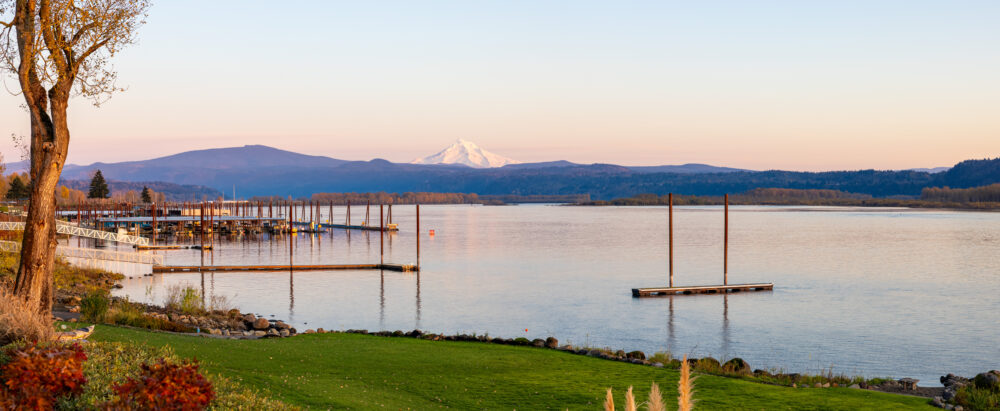Early Settlement and Indigenous Roots
Camas, Washington, has a rich history that predates European settlement. The area was originally inhabited by the Chinookan peoples, who thrived along the banks of the Columbia River. They utilized the fertile land and abundant natural resources, cultivating various plants and hunting local wildlife. One of the most important plants to the indigenous peoples was the camas bulb, a starchy root that provided a crucial food source. The region’s name is derived from this plant, highlighting its significance to the local culture and economy.
European settlers began to arrive in the mid-19th century, drawn by the promise of land and opportunity. The first recorded settlement in Camas was established in 1860 by a man named William G. McDonald, who recognized the potential of the area’s natural resources. The establishment of this settlement marked the beginning of significant changes in the region, as new settlers arrived, bringing their customs and lifestyles, often at the expense of the local indigenous communities.
Growth and Development in the Late 19th Century
By the late 1800s, Camas was beginning to transform into a bustling community. The arrival of the Oregon Trail made the region more accessible, attracting more settlers seeking farmland and economic opportunities. In 1889, the city was officially incorporated, and it quickly became known for its fertile soil and favorable climate, ideal for agriculture.
The growth of the timber industry played a crucial role in Camas’s development. Logging became a primary economic driver, with numerous sawmills opening to take advantage of the surrounding forests. This period also saw the establishment of the paper manufacturing industry, which would become a cornerstone of Camas’s economy. The Camas Paper Mill, established in 1883, was one of the first significant factories in the area and helped shape the town’s identity.
The Role of the Paper Industry
Camas became synonymous with paper manufacturing in the early 20th century. The local paper mill expanded, leading to increased employment opportunities and the establishment of a robust industrial base. The industry not only provided jobs but also influenced the growth of infrastructure in the area, as more residents moved to Camas for work.
As the paper industry flourished, the town began to diversify its economy. New businesses opened, and the population grew steadily. The mill’s success led to technological advancements and innovations within the industry, further entrenching Camas’s position as a significant player in paper production. This development brought a sense of prosperity, but it also posed challenges, particularly regarding environmental impacts and labor conditions.
The 20th Century: Challenges and Resilience
The mid-20th century was a tumultuous time for Camas, as the community faced economic fluctuations and changing industrial landscapes. The paper mill continued to be a significant employer, but by the 1960s and 70s, competition from larger mills and shifts in the industry began to threaten its viability.
Despite these challenges, the town demonstrated resilience. Local leaders worked to attract new businesses and diversify the economy, emphasizing the importance of community and collaboration. This period also saw a renewed focus on preserving the town’s natural beauty and heritage, which led to various conservation efforts. The establishment of parks and recreational areas became a priority, enhancing the quality of life for residents.
A Modern Community: Growth and Transformation
In the late 20th and early 21st centuries, Camas continued to evolve. The city’s proximity to the Portland metropolitan area made it an attractive destination for families and businesses alike. Population growth surged, leading to increased development and infrastructure improvements. The city worked diligently to balance growth with maintaining its small-town charm and community spirit.
New industries emerged, including technology and retail, which diversified the local economy. The city’s commitment to education and quality of life attracted new residents, further contributing to its vibrant community. This growth was not without challenges, as the city faced pressures related to housing and transportation. However, local leaders prioritized smart development strategies, aiming to preserve the character of Camas while accommodating growth.
Celebrating Heritage and Community
Today, Camas is a thriving city that honors its rich history while looking toward the future. Annual events and festivals celebrate local culture, drawing residents and visitors alike. The community continues to cherish its natural surroundings, with numerous parks and outdoor activities available year-round.

Efforts to preserve historical sites and educate the public about the town’s heritage remain vital to Camas’s identity. The history of Camas serves as a reminder of the resilience and determination of its people, showcasing a unique blend of cultural influences that continue to shape the city today. As Camas moves forward, its commitment to community, sustainability, and growth ensures that it remains a vibrant place to live, work, and play.
